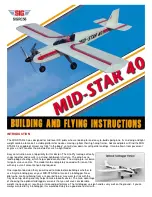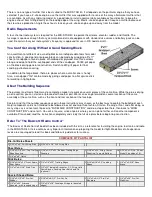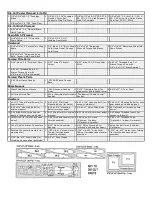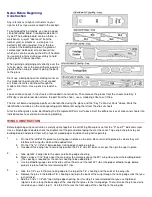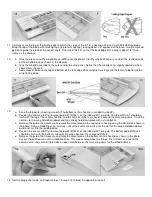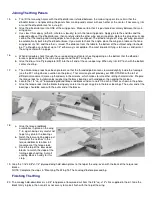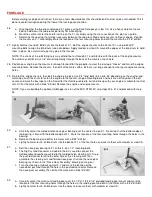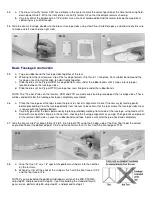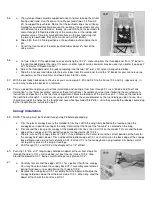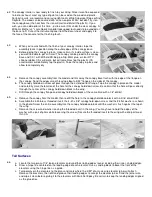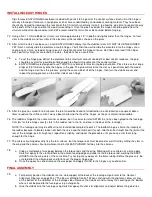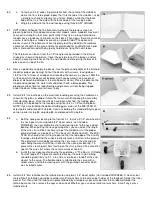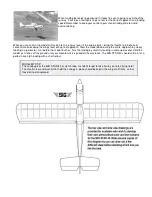
.
49.
a. The 1/4"x7/8"x2" basswood wing hold-down blocks key into notches in the
fuselage doubler. To accurately fit them, temporarily tape or pin the wing
in place on the fuselage.
b. Working through the lightening holes in the fuselage, install the wing hold-
down blocks in the notches, making certain they are in full contact with the
wing bottom surface. Tack glue the blocks to the fuselage to hold them in
position, then remove the wing. Finish gluing the blocks in place using
medium CA.
c. Cut two 2" lengths of 1/2" triangle stock to brace the wing hold-down
blocks. Glue the triangle braces firmly to the hold-down blocks and the
fuselage doublers.
50.
a. Fit the wing in place on the fuselage and check its alignment (see the General Alignment Drawing on page 20 of
"The Basics of Radio Control" booklet). When you are satisfied that it is aligned correctly, tape it so that it can't
move.
b. Carefully mark and drill locations for the wing hold-down blocks at the same time with a #7 (or 13/64") drill bit. Keep
the drill perpendicular to the top surface of the wing so the heads of the nylon bolts will seat flush against the
plywood plates.
51.
a. Remove the wing and tap the
wing hold-down blocks with a
1/4-20 tap. You can apply a few
drops of thin CA to the holes to
strengthen the threads.
b. Redrill the holes in the wing with
a 1/4" drill bit to pass the nylon
wing bolts.
52.
a. The servos need to be mounted in the fuselage so that the nylon pushrods
can be routed properly, with the least amount of curvature. Refer to
Chapter 2 of "The Basics Of Radio Control" and the plans for information
on where and how to mount the servos in the fuselage. Start by cutting
two 3-1/4" long servo rails from the supplied 3/8" sq. basswood. Use the
servo tray provided with your radio to properly space the rails along the
"flat" edges of the fuselage doublers. When satisfied with their position,
glue the servo rails in place.
b. Lock the rails in place by gluing a die-cut Lite-Ply servo rail support (SRS)
at each end of both rails.
53.
a. Locate the two .190 o.d. x24" nylon outer pushrod tubes, and roughen the
last 3" of each with sandpaper to aid glue adhesion.
b. Slide the outer pushrod tubes forward through the pushrod exit slots in the
fuselage sides and the notches in F-6. Continue sliding the tubes until only
about an inch of the roughened end sticks out of the slots.
c. The outer pushrod tubes should meet (but not cross) at the notch in F-5.
Glue a scrap of balsa below the tubes to hold them in place.
d. Apply glue liberally (either slow CA or epoxy) to the outer tubes at the
pushrod exit slots, from both the inside and the outside of the fuselage.
54.
a. Use a single-edge razor blade to trim the outer pushrod tubing flush with
the outside of the fuselage.
b. Install the die-cut Lite-Ply stab support (SS) so that it is flush with the top
of the fuselage sides.
c. When dry, sand the "Tee-Lock" tabs on the stab support flush with the
fuselage sides.

